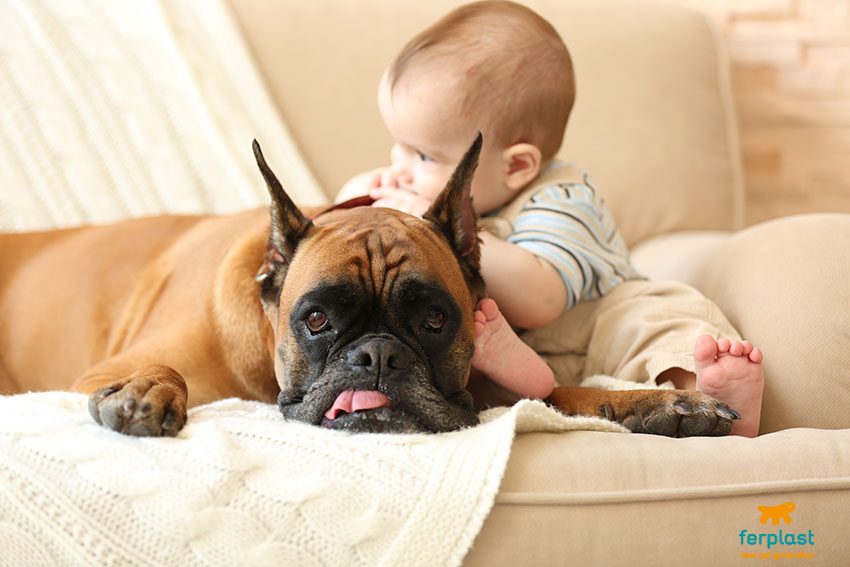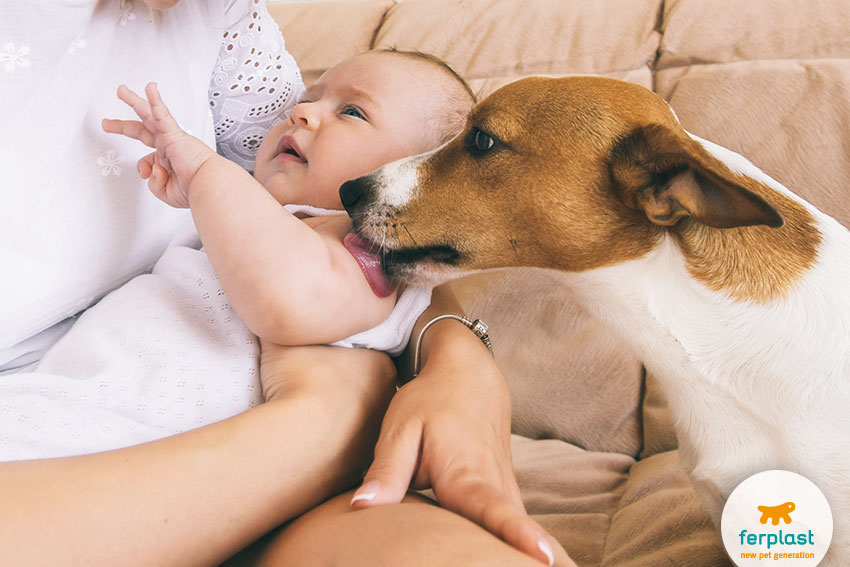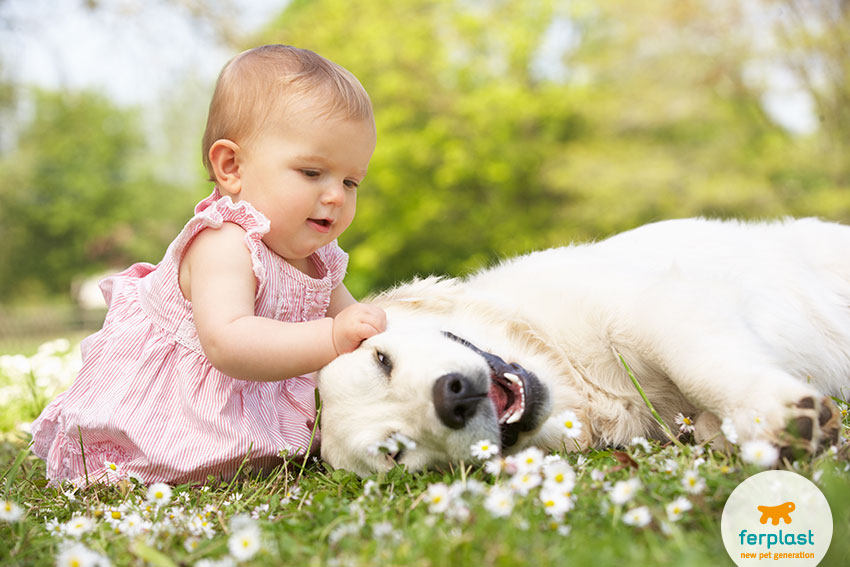So you’re like a dog with two tails because of your new bundle of joy. You happily take him home and notice that your dog keeps barking at the baby, is afraid of him, growls at him or behaves aggressively. What can you do to avoid or solve this unpleasant surprise?
Try putting yourself in your dog’s shoes for a moment: one moment she’s perfectly fine in her home and happy with her position in the family hierarchy, next thing she knows a new guest comes up out of the blue, altering the natural balance of things, receiving most of everyone’s attention and pampers. Perhaps your dog was even somewhat tersely shooed when trying to get near the baby. You can’t exactly bias her if she doesn’t take it well, let’s be honest.
Just like you’d do to prepare a child for his/her new sibling, do the same with your dog. Parents/owners should behave as mediators, helping the dog build, day after day, a relationship with the baby. The earlier you start, the better: the smaller the child, the easier it is to introduce him to your pet. When the child begins to move by himself, it’s quite likely that your dog will end up being disturbed, as the baby or toddler will probably chase the dog, move too fast, pull her fur, yell. When it gets to that point, managing them becomes definitely more complicated.
Let’s take a look at some useful info:
- the taboo bedroom. If all of a sudden one of the rooms becomes off-limits, your dog will only become more curious about it. Wouldn’t you? Try to get your dog involved when you’re getting the nursery ready. Let her come in and sniff around, to familiarise herself with the new and strange objects such as cot and pram, which could otherwise scare her;
- introductions. To avoid unpleasant reactions, let your dog get to know the baby as soon as you get him home. You can introduce the baby to your dog while holding him in your arms, while someone your dog trusts brings her near the baby, caressing and talking to her. Never yell or shoo your dog away when she comes close to the baby, or she’ll associate the baby to these unpleasant events;
- the gate. If you’re afraid your dog will come close to the baby with as much grace as a hurricane, it’s a good idea to install a safety gate through which the dog can sniff and get to know the newcomer. Gates you can see through are certainly better and more inclusive than a closed door;
- distractions. If your dog barks at your baby or shows any other sign of being upset, try distracting and calming her by taking her for a walk. If that’s not enough, try talking to her veterinarian about using pheromones;
- keep your eyes open. Even the world’s gentlest dog is still an animal. Keep your eyes on your baby at all times whenever he’s interacting with your dog;
- neglecting is bad. Give your dog as much attention as you always have. Get your dog involved when you’re interacting with your baby, caressing her, playing with her or throwing a few sweet words her way. Dogs should never be neglected; help them integrate to the new family instead.
Some dog breeds get along better with children than others, and if that’s the case of your dog, the newcomer could be more easily accepted. Remember that, as your child gets older, you should not only help your dog accept your child, but also teach your child to respect your dog, showing him what bothers the dog and when not to disturb her.
It may seem difficult at first, but with time and patience, you’ll see that everything will be fine. Living with a pet is good for both mind and body, and it’s particularly beneficial for children!




